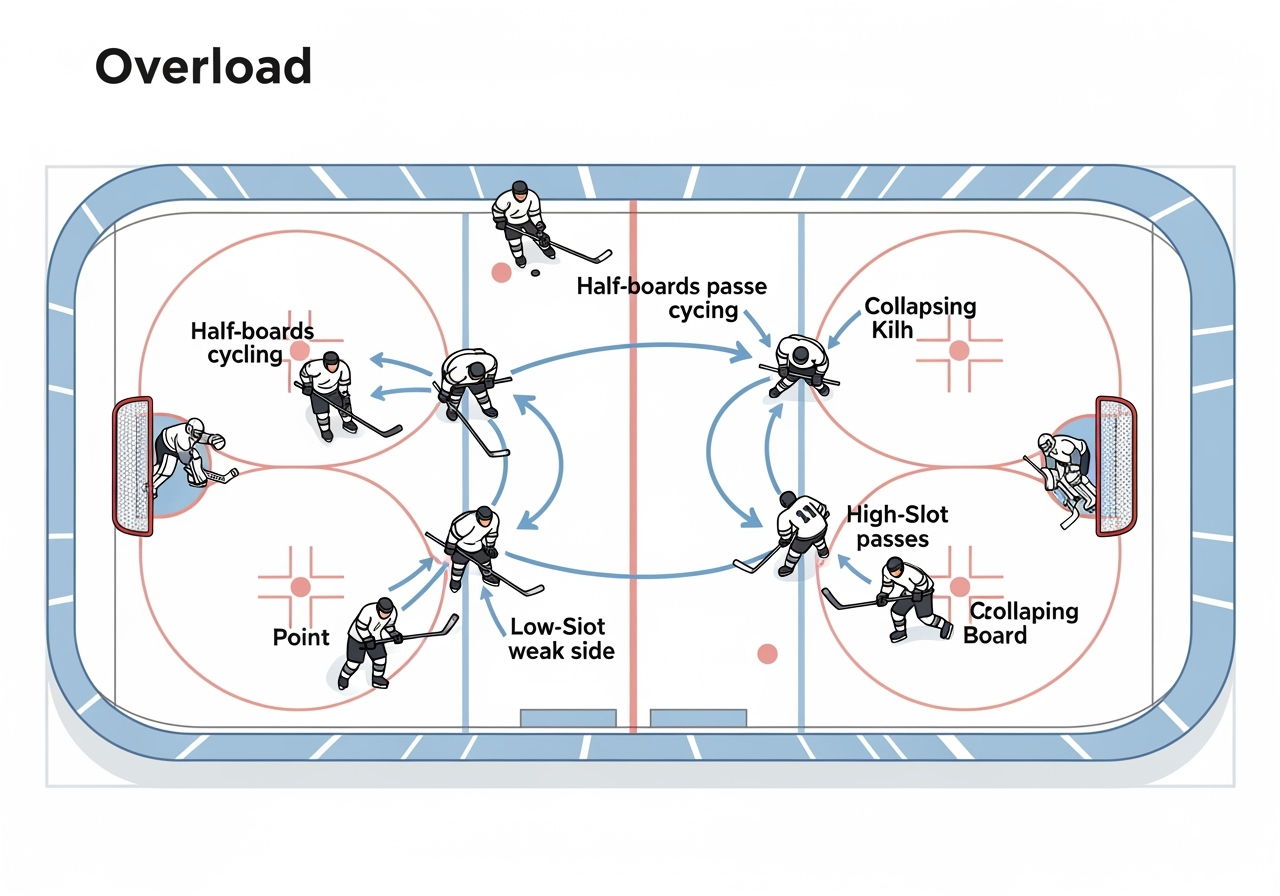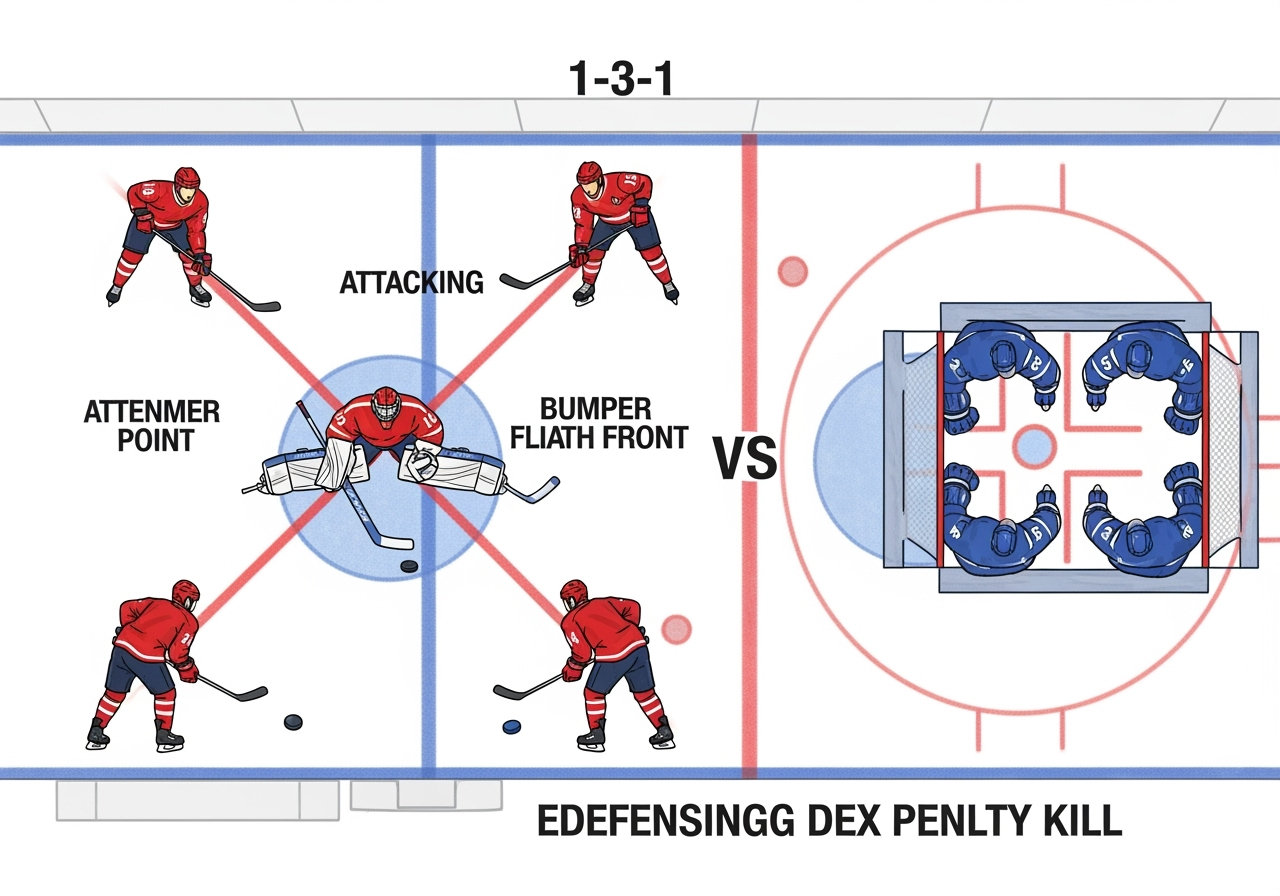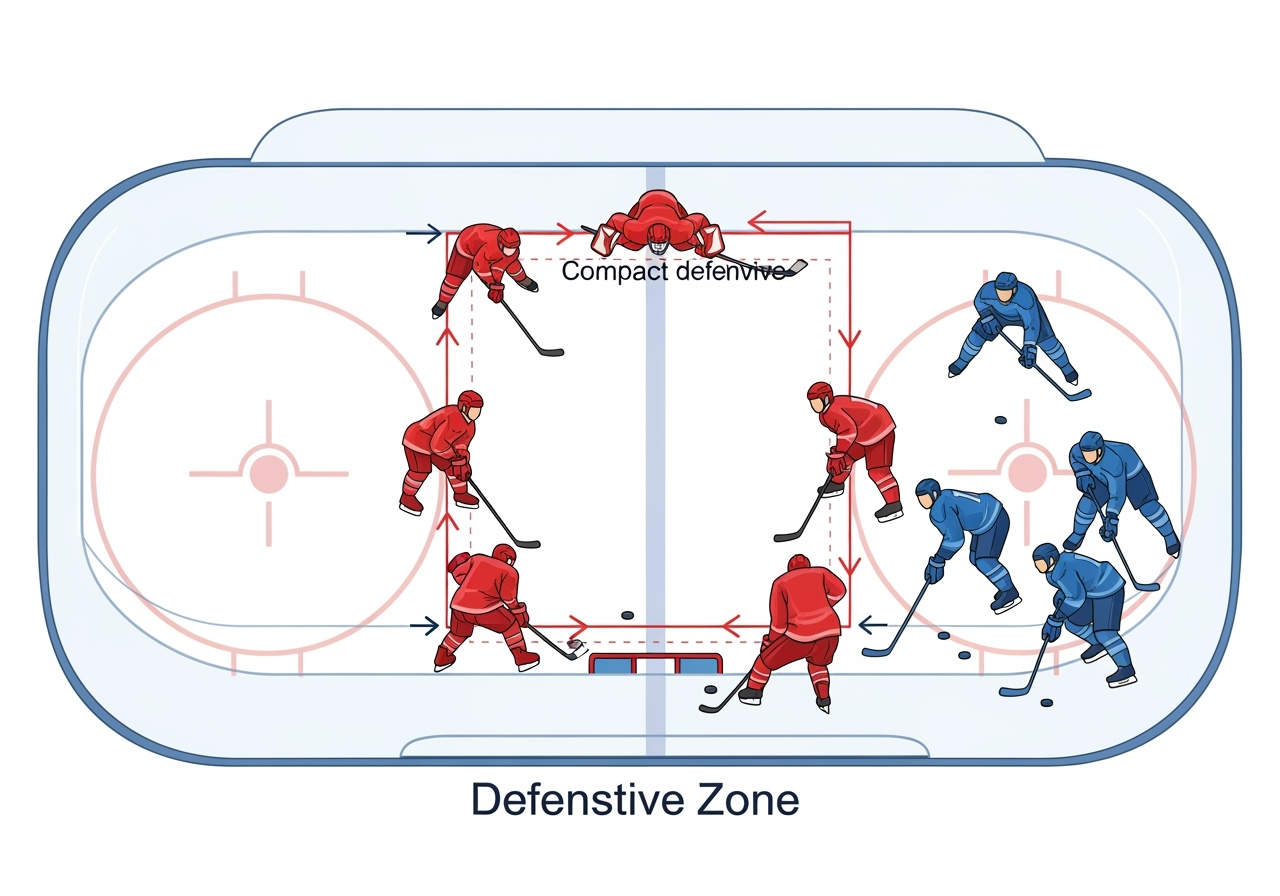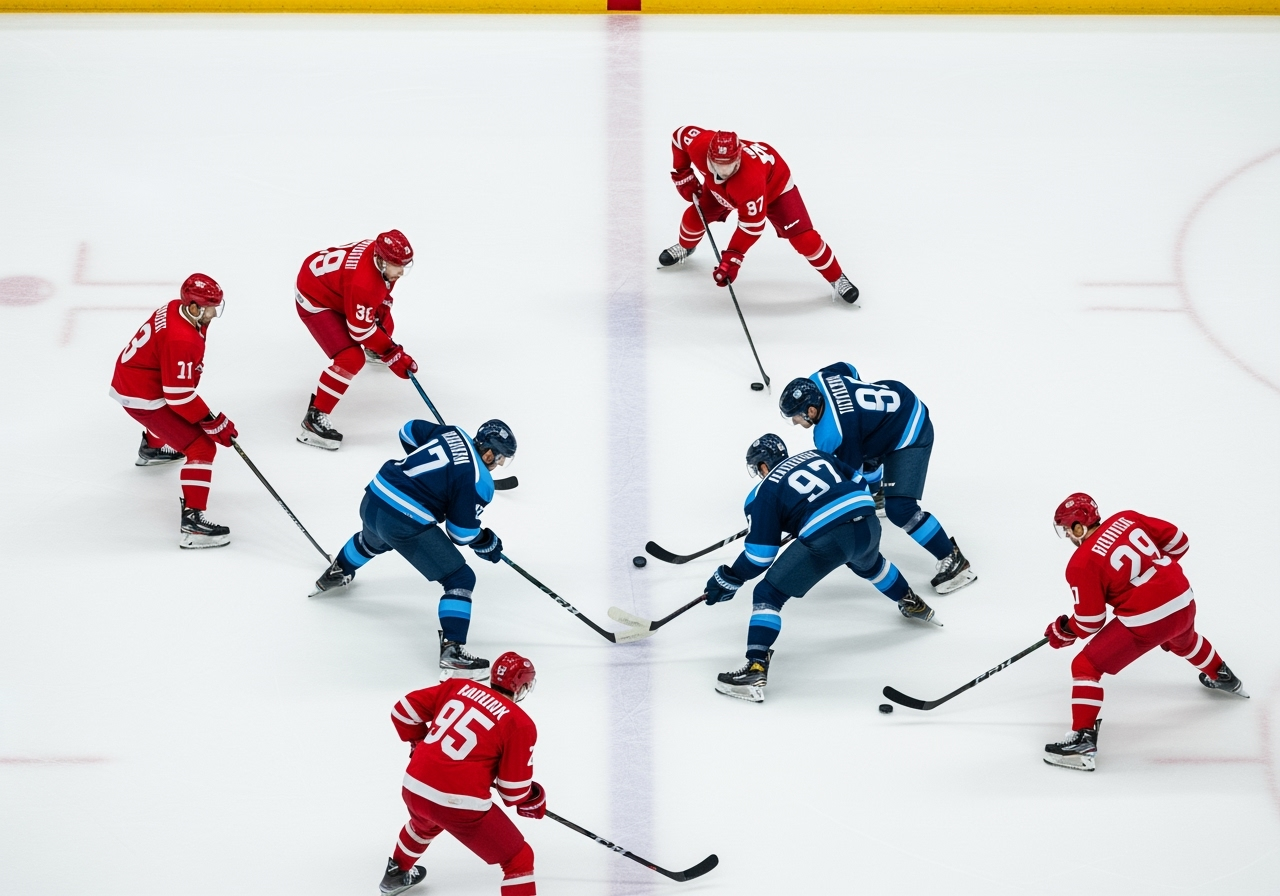What Is a Power Play in Ice Hockey?
In hockey, a power play changes the ice situation in hockey in a fundamental manner, in that it gives an advantage in numbers when a team has a player in the penalty box. The term appears in present-day hockey regulations since the beginning of the 20th century and is a reference to the fact that the team that was penalized has two minutes of playing with one less player, as per the rules of the IIHF and NHL, as of 2025 (citation placeholder). The probability of scoring with this man-advantage is quite high and is approximately 20 percent and this man-advantage has to be implemented carefully and swiftly with the puck being moved by the attacking side. Warning: Care is to be taken; an early change of lines in a delayed penalty will cause bench minor. Such an impact can be noticed, e.g. in the 2024 DEL Finals, where they netted their initial goal in Game 3 when they had the first numerical advantage. In order to maximize this opportunity, the most important offensive positions (point man, bumper, net-front forward) are important.
When and Why Power Plays Occur
Hockey power play is the scenario which occurs due to the minor or major offenses of an opponent, such as hooking, high-sticking, and too-many-men. This puts a clear numerical advantage, altering the tactical initiative. A coach usually has 10-15 seconds to put out the best line of attack he can, so that he can make use of this goal scoring opportunity. Quick decisions are vital.
In these situations, it is important to be conversant with hockey rules. When a referee points to a penalty he/she raises his/her arm and when the attacking team gets control of the play or when play is halted he/she blows the whistle. The sequence involves:
- Arm raised by referee. Play goes on till the penalized team regains the control. Whistle blows and the player off to the penalty box. There is face-off in their defensive zone. The DEL teams are very precise with the time they switch the lines to deploy their strongest offensive unit in order to create an immediate impact, especially in delayed 5-minute majors. The tendency of the penalty kill is usually scouted by coaches.
Types of Power Plays: 5-on-4, 5-on-3, and More
Standard 5-on-4 Advantage
A regular 5-on-4 man advantage is usually with two different units to have an offensive pressure. These units are swapped and ideally they have 45-60 seconds of good zone time per shift. This type of strategic rotation gives the most scoring opportunities and tires the four-man penalty kill (PK) out on a regular basis since the defensive positioning has to be continually changed. These shifts are carefully prepared by coaches high energy and taking advantage of tired defenders.
The correct spacing of offensive players is critical to this formation and the players are linked in triangles to penetrate the tight defensive box of the opposing team, leaving critical passing and shooting lanes. This is how a power play is done: The team goes in to the clean zone with a controlled speed and very often does a drop pass. The players would then arrange their preferred formation by passing the puck around so as to make the defenders come out of the position. They will subsequently develop quality scoring chances out of the prime positions by focusing on fast, crisp puck movement in order to create a shot promptly. Make point-to-bumper passes and switch on every third touch: this will put the other goalie in a state of paralysis and give an invaluable screen in shooting, which will immensely add to the chances of scoring and bafflement to the pen kill.
High-Pressure 5-on-3 Advantage
During a 5 on 3 power play, the offense will only face 3 penalty killers. Such defenders are likely to use either tight diamond or 3-2 box with the purpose to collapse on the net. Nonetheless, such formations leave big openings in the high slot and the flanks which provide excellent shooting opportunities. The effectiveness of the execution requires a quick transfer of the puck; a good shot within 12 seconds of getting a possession of the offensive zone with the aid of the open ice.
Over-Passing Decreases the Number of Shots – Caveat Excessive puck circulation which does not culminate in a shot allows the shorthanded unit to regroup. Focus on good shots as opposed to fancy passing. A pass should also make a good shooting angle or make defenders go out of position.
It was evidenced in the Colorado Avalanche in the 2024 season where they were able to score a goal in 38.5 percent of their 5 on 3 power plays. Their abilities of passing the puck fast and exposing the defense flaws were very deadly.
Rare Scenarios: 4-on-3 & 3-on-3 Power Plays
In ice hockey there are more rare man-advantage situations, most frequently during overtime. It is not the case in the year 2025, with IIHF and NHL hockey rules. When an overtime scoring penalty has been made in NHL, the match turns into 4-on-3 power play. In IIHF events, minor 4-on-3 play is accidently played during 4-on-4 play. They are rather strange conditions and these conditions require strange offensive lines because the open ice and the pace of a game are considerably faster.
The 2-1 in a 4 on 3, two defensemen on the blue line and one forward on the high slot will be the common defense. The 3-on-3 advantage, a point, a moving rover and a net-front are common when having the 1-1-1 strategy. These patterns make use of the wide skating tracks and passing opportunities to an optimum. The exhausted players depend on defense errors of the attackers to the individual skill, accurate passes, and fast decision making.
Here are the pros and cons:
Pros and Cons:
- Pros: Imaginative plays: Huge Skating Lanes: Permits imaginative plays. Skill Showcase: practice on single puck control.
- Cons: Limited Net-Front: Less screens, rebound possibilities. Turnover Risk: Odd-man rushes to are risky.
Common Power Play Formations and Their Strengths
Umbrella Formation
Umbrella formation is a perfect power play in the hockey strategy and it has been determined to be effective since blue line. This is the most common combination of power play with one point man in the centre, two on the flanks at the top of the circles and two net-front to deny the goalie. This formation provides optimum point shot lanes and therefore defensemen can be able to deliver full-blooded shots with straight line of sight. It can however be exploited by high aggressive presses that can trap players along the boards or result to turnovers to break the offense flow.
To fully utilize the potential of the Umbrella and avoid the defensive pressure, it is necessary to move off-puck. The tips include always rotating high forwards since this will lead to mismatches against penalty killer and the new passing lanes will be opened. This constant movement makes the defenders rotate and they are prone to breaking or giving open shots. This rotation was well used by DEL team Adler Mannheim in their 2024 season, as they created quality scoring opportunities and kept the pressure in the offensive zone with man-advantage.

Overload Formation
The Overload formation is an power play formation where the offense has four players on one side of the ice typically the half-boards. This puts them at an advantage in numbers and this overwhelms the penalty kill to make important gaps. The players carry out what is referred to as a half-boards cycle, that is, passing the puck around the perimeter to leave the out of position defenders. This often leads to proper low-high passes out of deep in the zone to a high-slot player or point defenseman. These passes expand the defensive box, which makes good shots.

Merits and demerits of overload formation: Strengths: This defensive set up is very good at protecting the puck and generates good short distance scoring chances. It is good in puck cycling and maintaining pressure on the opponent and wearing him out. Cons: The limitation of the range of offense play is a drawback as it cannot shoot points at a distance. It is prone to a strong-side puck pressure. Such an approach was successfully implemented by the German national team at the 2024 IIHF World Championship as it helped it to maintain the control over the possession and to achieve scoring chances in the close area.
1-3-1 Formation
The 1-3-1 is a working configuration of a hockey power play, and its target is to produce a hazardous goal scoring arrangement using exact puck movement. At the center of it is the bumper player, who is the high slot. This player is the centre of the play where he /she passes and receives the puck to the flanks or point. Their most important task is to create passing lanes east-west and this will make the penalty killers move side to side and open up the defense on the other side and there will be soft spots to shoot with the power play. This ever side to side motion generates shooting chances.
The quick-release one-timer on the flanks is one of the major weapons on the offensive side of the 1-3-1 formation. The bumper or point brings the players on the sides of the net usually around the hash marks and the players take immediate shots. This fast-decision making does not allow the opposition to rearrange its defensive formation. CAUTION: In case of turnover at blue line in such attack, immediate odd-man rushes of the shorthanded team can occur, and that is a grave danger.

Formation Comparison: Strengths vs. Weaknesses
The power plays of any of the configurations have their good and bad sides and they must deliver the best results in the area of offense in case of man advantage. These variations are not new and this assists the teams in exploiting the weakness of the other teams. The advantages and disadvantages of every set-up are supposed to be familiar in order to use it in a quite strategic manner.
| Feature | Umbrella | Overload | 1-3-1 |
|---|---|---|---|
| Puck Movement Speed | Moderate, often from point | Deliberate, cycle-oriented | Rapid, east-west flow |
| Shot Quality | Strong from point, deflections | High-percentage from tight areas | Diverse, from bumper and flanks |
| Turnover Risk | Moderate, susceptible to quick pressure | Lower, emphasizes puck protection | Higher, intricate cross-seam passes |
Advantages of Use of Strategic Formation:
- Maximizes scoring lanes. Adjustments during penalty kill are obligatory. Cons: Counterattacks is short-handed by risks. Requires exact and synchronized implementation.
The statistics of DEL 2024 season always underline the fundamental effect of the decision of the formation. The most superior teams would be in a position to have the power play percentage that was most likely to be above 25 percent by perfecting the tactics that they wanted to use. This required the planning of the intended plays to neutralize the other team that was becoming very effective in the penalty kill tactics and to maintain the offense.
Core Strategies: Movement, Passing, and Positioning
Off-Puck Movement
Power play strategies cannot play without off-puck movement. At the umbrella formation, the spacing is optimised at cycling and interchange. During cycling the players turn around half-boards and goal line and this causes the defenders to pursue them. Interchange is changing of players at the top (point man, high forwards) that break up defense. The two of the techniques extend the box of the opponent, and provide passes and high quality shots seams, and the man benefit is even more successful.
The teams practice such simple movements by using a drill of constant rotation. The position interchange and quick passing are the basis of the drill and this would enable the units to learn how to read intuitively as well as making smooth position changes that would enable them keep the offense under pressure at all times. In order to be in a position to carry out this drill, the units are supposed to be keen to: Begin in an umbrella arrangement. Flank gets the point man and gives it to bumper. This aims at moving and responding to passing channels by the non-ballplayers. Change the puck. Tip: Do not take more than two seconds with the puck. The fast pace of exchange does not allow the defense to settle down and this results in reactions and creation of scoring opportunities.
Precision Passing Lanes
Accurate passing is very essential in power play. Teams practice timing seam passes and make use of small margins against an aggressive penalty kill, which constantly makes defenders react at a moment. The players crisply pass, on tape to pass the puck and this keeps the defenders on their toes always. This fast flowing motion characterizes elite offense performance in the man advantage.
Caution: Telegraphing your passes is a large risk. Penalty killers are good readers of the body language and orientation of the stick. The predictable passes can easily overcome your advantage in the men as they can lead to the interception of the pass and deadly shorthanded breakaway.
This proficiency is indicated in the 1-3-1 structure of the 2024 NHL Tampa Bay Lightning. They tend to be successful in quick deceptive passes that disorient the opponents. They exploit the bumper position by giving the ball to open flanks to bewilder penalty killers and generate scoring opportunities on a regular basis.
Net-Front Positioning
The main offensive objective in a power play is to get proper net-front positioning. This specialist aggressively screener the goaltender of the opposite team and it is difficult to follow the puck. They can position themselves well to deflect any shots and change the direction of the puck to score the goal in a deceiving manner. Besides, this player is also unrelenting in getting rebounds, by exploiting second chance just near the net. This is a challenging position that increases the scoring menace of the team to a great extent.
Pros and Cons of Net-Front Engagement Pros: Obstructs the vision of the goalie leading to blind shots; provides greater chances of deflection and rebounds; draws players leading to open lanes.
- Cons: One can face a high penalty of interference; it is possible to block the shooting lanes of teammates; it is physically demanding.
Due to the intensity of pressure in this area, there must be a strategy in the rotation of the net-front player in order to ensure maximum effectiveness of the team. A rotation after every 20 seconds keeps the players fresh and puts constant high pressure on the defense and the goaltender. This program helps to score every opportunity.
Penalty Kill vs. Power Play: Tactical Breakdown
Penalty Kill Roles & Box Formation
The penalty kill (PK) is a highly significant defensive play in hockey and is supposed to offset the man-advantage of the opponent. Teams normally use a stationary box shape or pressing. A small rectangle of shorthanded players is played in a box shape and denies shots and passing opportunities. The strong-side forward (the one that pressurizes the carrier) and the weak-side forward (the one that covers the far point) are the main PK positions. Net-front defenders: there are two net-front defenders that defend the net-front and stop the slot shots. They aim at pushing the power play in hockey unit to the perimeter.
However, a dire warning to PK units, the collapsed box when players are too deep in their own end, this has the effect of leaving the high slot open to murderous one-timers. This error leaves huge open ice to the offense. The most significant parts of counterattacking the man-advantage are having good spacing to cover lanes, active sticks to break up passes, and a puck pursuit.

Counter-Strategies for the Power Play Unit
An offensive unit needs to make tactical shifts when it is up against an organized penalty kill. One of the most helpful power play strategies is a sudden change of overload. This strategy is meant to rush the players to one side of the ice to collapse defending box and leave the other side open. This leaves open lanes to cross-ice passes or rapid one-time chances, which are necessary to build offensive momentum and score during the man-advantage.An important hint to offensive effectiveness is to make use of deceptive motions. An example is that a point player may do a fake slap-shot. This is generally what causes a shot-blocker to commit, leaving an important passing lane or an open shot right off the lane left by the collapsing defender. It has been effectively demonstrated by the teams like Eisbaren Berlin in the 2024 season when it commonly used the deceptive faking and the control of puck movement to break up the defensive structure and create high-danger scoring chances. These strategic responses are essential to be learnt so as to enhance efficiency in the attack.
In-Game Adjustments and Reads
Coaches are always making key adjustments on the fly to guarantee the greatest success of power play. Inter-shift communication must be short. They give real time reports with the indication of any defensive gap and the potential tactical change. This continuous communication makes the unit flexible, responsive to the direction of the enemy and can rapidly adapt to new issues.
The present day hockey makes use of technology. Live data tablets are used by coaching staffs to perform advanced analytics such as shot heat-maps. Such pictures determine where the shots are taken, areas of maximum danger and goaltender weak points. It is applied in the strategic decision making in the form of passing out of the puck and shot selections to ensure that teams exploit the penalty killing of the opponents.
Caution: Cross-ice passes that are forced during blocked lanes are very dangerous. These low percentage plays against a pack down defense normally result in an immediate turnover, which often results in shorthanded rushes that are dangerous. Instead, it is patience and precision of puck possession that counts, wait out open lanes or give up the puck to reset.
Advanced Tips to Maximize Power Play Efficiency
The next practical coaching techniques that you are to apply so that your power play would be as effective as possible in 2025 are the following:
- Video Review: Check the trends of the opponent in penalty kill.
- Coded Set-Plays: Make use of some action terms which are fast and synchronized. Role-Based Positioning: Place position players in the most advantageous place to be effective.
- Quick Entries: Quick the puck get-ins at the offensive zone. PK Drilling – Pressure Drills. Goalie Analysis: Breakdown the weakness of other goalies.
- Non-Verbal Signals: Apply tactical shift cues. Off-Puck: movement open space. Net-Front Chaos: Put an emphasis on screens and bounce control. The rotations 5 on 4: Fluid Formations.
The latest entry that has been used by German U20 national team is a powerful drop-pass entry that has proved to be a very thorny element in breaking defensive patterns and creating too many goal scoring opportunities. The time spent in the offensive zone is among the significant values of the work of the unit and introduces clear and valuable information that can be utilized in order to make corrections without any limits. Caveat: Coaching is good only in its specifics but over coaching is ironically the cause of incapability to make a decision; a free reaction has to be instinctive and clever, independent decision making has to be a decision on the ice.

FAQ: Understanding Power Play Nuances
Hockey power play involves some rules that one has to know. Is it possible to pull a goalie in a power play? Yes, even to a bold 6-on-4 or even a 6-on-3 power play, despite the threat of an open net. Does icing take place when short handed? No, the existing rules in hockey allow safe clearance of pucks by a shorthanded team by suspending icing. What is the duration of a two-minor penalty? Four minutes; even though the first half has scored, its second two minutes segment does not halt.
When there is two or more punishment, they are served one after the other to enhance the gain. Are players allowed to score directly off a face-off? No, it has to be touched by another player first purposely to become valid. Does a penalised player come back straight away? Yes, when penalty time expires they resume playing in case of obvious puck possession by his side or the situation is safe. These requirements echo the main changes in the rules of 2025. To obtain complete information visit IIHF Rulebook [Link to IIHF Rulebook].